The man who 'made' Paris Hilton
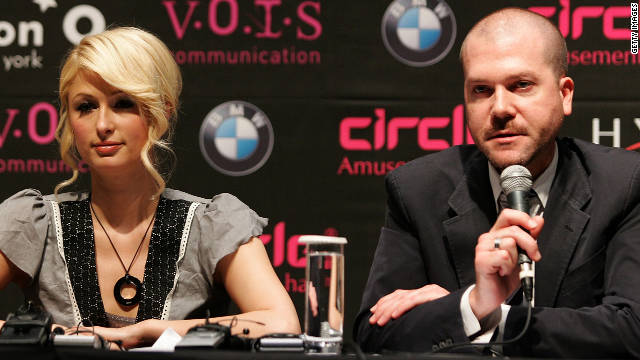 Jason Moore was Paris Hilton's manager for about 10 years, until 2009. He worked behind the scenes on some of her major projects. Here's a look back at Hilton's time in the spotlight:
Jason Moore was Paris Hilton's manager for about 10 years, until 2009. He worked behind the scenes on some of her major projects. Here's a look back at Hilton's time in the spotlight:
 Hilton's first small role came in 2001 when she appeared in "Zoolander."
Hilton's first small role came in 2001 when she appeared in "Zoolander."
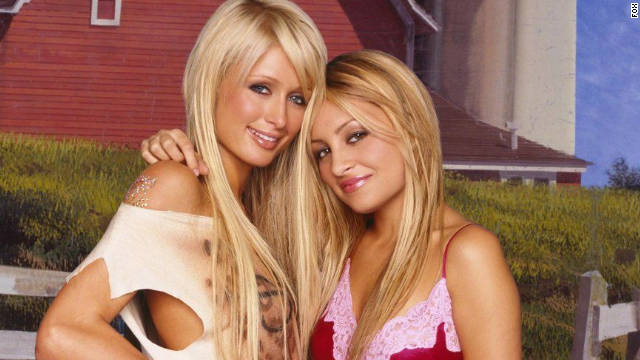 Her Fox reality show, "The Simple Life," with Nicole Richie, premiered in 2003. About 13 million viewers tuned in for the first episode.
Her Fox reality show, "The Simple Life," with Nicole Richie, premiered in 2003. About 13 million viewers tuned in for the first episode.
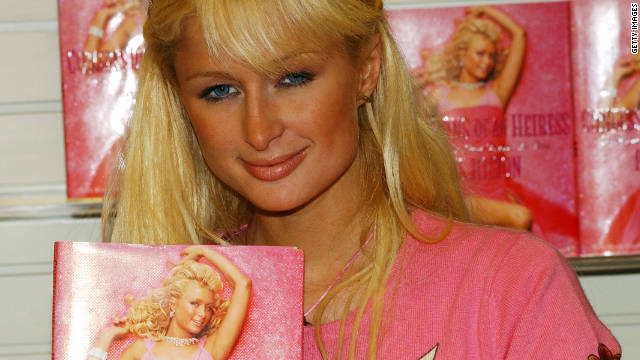 In 2004, Hilton released her autobiography "Confessions of an Heiress: A Tongue-in-Chic Peek Behind the Pose."
In 2004, Hilton released her autobiography "Confessions of an Heiress: A Tongue-in-Chic Peek Behind the Pose."
 Hilton launched her own first perfume, "Paris Hilton," in 2004.
Hilton launched her own first perfume, "Paris Hilton," in 2004.
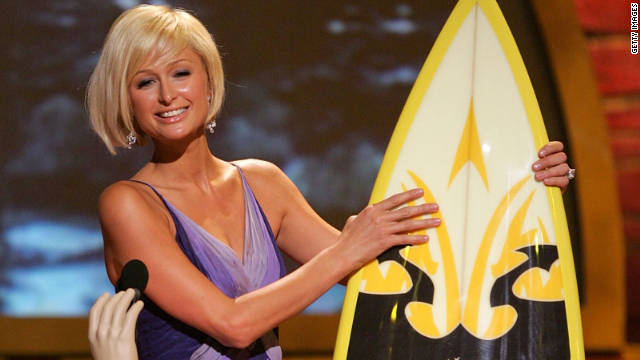 Hilton won the Teen Choice Award for "Best Scream" in 2005 for her role in the movie "House of Wax."
Hilton won the Teen Choice Award for "Best Scream" in 2005 for her role in the movie "House of Wax."
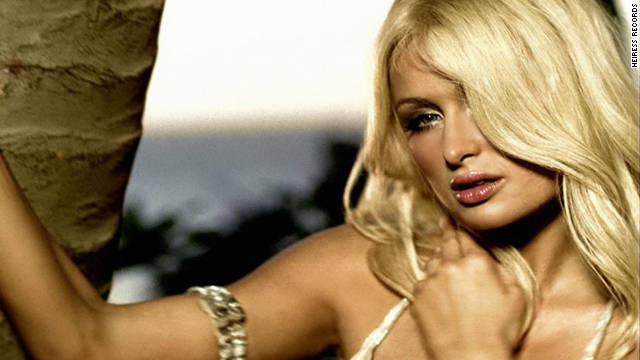 In 2006, Hilton released her debut album, "Paris."
In 2006, Hilton released her debut album, "Paris."
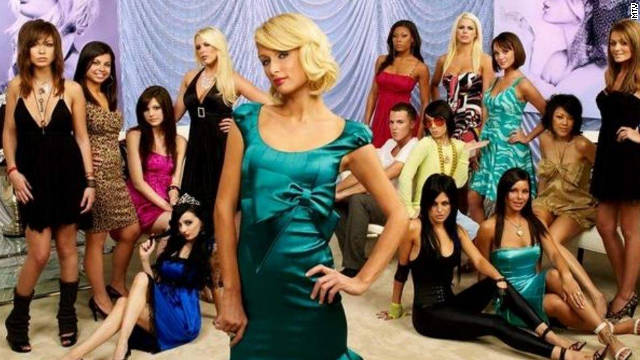 After "The Simple Life" was canceled in 2007, "Paris Hilton's My New BFF" premiered on MTV in 2008. In the show, Hilton searched for her new best friend through a series of challenges.
After "The Simple Life" was canceled in 2007, "Paris Hilton's My New BFF" premiered on MTV in 2008. In the show, Hilton searched for her new best friend through a series of challenges.
 In 2009, Hilton launched her sixth fragrance, "Siren."
In 2009, Hilton launched her sixth fragrance, "Siren."
Editor's note: This weekly series profiles those who capitalize on our obsession with celebrity while always standing just outside of the spotlight.
(CNN) -- The exploits of Paris Hilton -- on screen, on the red carpet and in the police blotter -- were once impossible to escape.
It got so bad that some publications instituted a Paris Hilton reporting ban.
But for the past couple of years, it seems, the once-ubiquitous starlet has all but disappeared.
Love her or hate her, there's no denying that Hilton is a shrewd self-promoter and brand marketer. Some say she transformed celebrity more than any other modern-day star.
So why the disappearing act? Is her retreat from the media by her own design or something more?
Jason Moore was Hilton's manager during her ascent to superstardom, but he split with the celebutante in 2009, about the time she stopped being a fixture in entertainment news.
While Moore says he can't comment on Hilton's career trajectory since he stopped engineering it, it's hard not to link Moore to Hilton's fame. (CNN's calls to Hilton's publicist were not returned.)
The phrase "famous for being famous" is practically synonymous with Paris Hilton, but Moore says that it took a lot of thought and work to produce a star like her.
"That whole phrase exists because there was no definition for what was actually going on," he says. "When all the artists were doing what we now call I! mpressio nism, they couldn't name it at the time so they just said, 'squiggly painting,' 'crazy artists.' That's what 'famous for being famous' sounds like to me: a person not being able to properly define what a movement is and what that movement was doing."
Indeed, Moore, a film school graduate and painter who frequently uses art references to describe his work with Hilton (including, "I felt the painting was complete" as the reason for their split) created what is arguably the most universal pop art exhibit in recent history, and it wasn't by luck or coincidence or accident.
Moore got his start at the management company The Firm when he was fresh out of college. At that time, Hilton's hit reality series, "The Simple Life," was in development with Bunim/Murray and Fox and she had signed on with The Firm for representation.
Moore first met Hilton at a pitch meeting, but he already knew her from her steamy, NSFW photo shoot with David LaChapelle that appeared in Vanity Fair in 2000 and a seven-page GQ parody of Paris and Nicky Hilton that created buzz in 2002. The GQ story was about the fictional Mariot sisters, Frenchie and Dallas. Here's a sample line:
"Dallas says the two of them have more offers than they can deal with and are always 'exploring their options,' but eventually she would like to move to the Paris Marriot. 'Ah, Paris,' she sighs, looking out the window wistfully. 'I totally love that property.' "
"After that article, I recognized that she was a brand," Moore recalls.
Until then -- before TV, before the arrests, before the words "night-vision sex tape" entered the cultural lexicon -- Hilton was primarily known for her pedigree and for dancing on tables at New York hot spots.
"But already she was being emulated," Moore says. "It wasn't a Smith or Franklin that (GQ) parodied. It was a brand name and that's when I recognized that she is going to be bigger than anyone thought about, which was before anyone was thinking about anything at all."
Though Moor! e lacked any real experience or contacts in the clannish entertainment industry, once he saw the game-changing potential in Hilton, he resolved to be the one who helped her realize it.
"My dad was a Marine and drill instructor and he'd always say, 'first in, last out,' so I realized that for me to compete against the trust fund kids and the nieces and nephews, I had to work really hard and be better than all of them at what I did. I was the first one in the office and the last one out," he says.
"Then I would go home and try to apply brand theory to somebody who eats and drinks and goes to the bathroom. Not a machine, not a product. I took all the theory in pop culture that I already learned and started to realize if Barbie could actually talk, that would be the biggest brand in the world. And the name became Paris Hilton."
"Ultimately," he continues, "the goal was to take it from 'the Hilton sisters' to 'Paris and Nicky Hilton' so everybody would refer to them by name to 'Paris Hilton' and my biggest goal was just straight 'Paris,' for people to recognize her name and not the city. That's when I knew, you've got a brand."
One week before "The Simple Life" debuted in 2003, the sex tape later marketed as "1 Night in Paris" surfaced, featuring the infamous scene of Hilton, bathed in infrared light, picking up her cell phone while getting intimate with ex-boyfriend Rick Salomon. Moore denies that the leaking of the tape was a publicity stunt orchestrated by Hilton or her team.
"My theory," he says, "is that Rick was trying to be smart on marketing, and it created and increased curiosity in a way that he wasn't anticipating." (A spokesperson for Salomon said he "does not wish to comment.")
The first episode of "The Simple Life" aired to 13 million viewers and dominated its time slot.
"I think a lot of th! at stemm ed from the curiosity that was built in the media about who Paris Hilton was," Moore says. "She lived the ultimate image and was the ultimate brand based on the right name, the right look, the right height, the right hair color, the right eye color, the right everything for a formula that far exceeded anybody else at that time. She was the ultimate package that corporate America would want to make for itself as a marketing tool, but it was already made for them. They say to be a famous person, people want to be you or f*** you, and she encompassed both of those."
Moore quickly looked for ways to capitalize on the show's success and rehabilitate Hilton's public image by creating opportunities for her to present herself as a businesswoman.
Unlike with actors, "It wasn't all about reading the proper scripts," he says. "You had to look at it through a lot of marketing, a lot of pop culture, a lot of theory, a lot of things other than, 'Wow, the writing is good. It will get me an Emmy.' It just unfortunately wasn't the direction after the sex tape. You lose Coca-Cola and McDonald's, so you look for Carl's Jr. and the next thing. Ultimately, it was the best thing possible to break away from everybody and blaze that Wild West, to create something so iconic that's never been done that way."
His first order of business was to get Hilton to trademark her "Simple Life" catchphrase, 'That's hot.'
"There are a lot of ways pop culture defines things and one of those aspects is language," he explains. "She was very hilarious and very smart with her catchphrases and the way she applied them was so unique and catchy. She had two that were quite popular, 'That's hot' and 'Loves it.' Don't laugh, but I literally stayed in my bed and stared at the ceiling for a whole night and broke down the difference between them in verbiage, in slogans, as adjectives, as nouns, everything. 'That's hot' was the winner in my eyes. The next day I went to her with my crazy idea of trademarking it, and she was 100% ope! n to it. She's a very smart girl. She knew what I was trying to do and I think it made her very happy to see that there was that much vision."
The phrase was successfully registered and, in 2007, Hilton sued Hallmark for an infringement in one of their cards. The case was settled last year.
Initially, the trademark was fodder for scathing late-night monologues. But it was significant to Moore because it helped Hilton move beyond being known for what she wore and who she was dating. It marked the beginning of the Paris empire.
"The key," Moore says, "was planting seeds with regard to everything we did. Even if it didn't feel big and it didn't feel necessary, if there was a seed to be planted, we planted it. She understood that a ripple will, after a while, create a wave."
Moore also studied the branding blueprints of rock stars like the Rolling Stones, Jimmy Buffett and the Grateful Dead. "Those guys aren't releasing new material, but they're making hand over fist every year from what? Touring. Selling merch. Building more fan base. Exploiting more territories. Planting more seeds."
Soon enough, he and Hilton were traveling all the time.
"I said to Paris, we're on tour. Every venue is a stage. Always be in front of the fans, always perpetuating your brand, your merch, building new relationships. Encore, goodnight and we'll be back. It was important that we celebrate (native) culture too so you don't come in and step on them. Paris was amazing, she would immediately get a local designer and wear their clothes. The media and paparazzi loved it because she was wearing their hometown. Then you do something charitable. Then you party. And then do it over and over and over again. It was a machine. It was a Mike Tyson knockout."
Hilton's wins both in the United States and internationally were documented not only by the media, but also by Paris herself. She recorded and! photogr aphed everything (sometimes to her detriment) because, "She wanted history. She wanted to show her kids," Moore says. But it had another benefit, too: It helped them close more deals.
"We wanted to show companies what they were actually paying for, so we'd pop in a DVD of her crushing Seoul, Korea, crushing Tokyo, crushing Toronto, crushing Miami, crushing New York, crushing Brazil, crushing Mexico, crushing Sydney. Pop the DVD out and ask them if they have any more questions," Moore says.
Seeing Hilton in action had everyone convinced.
"She gave you all the senses that a brand should give you when you buy into it," Moore says. "If you're different, you feel the same, if you're the same, you feel different, if you're alone you feel together. So many people looked at this brand as so much more than a surface level celebrity. It was what corporate America wanted you to do: If you flew on an airline, hopefully your experience was 100% that you'd do it again. If you open a Coca-Cola at a family event, it's going to reflect memories so when you drink another one you're going to think about that. Those are all things that were being applied to a young lady and her business."
Moore and Hilton had the business of celebrity down to such a science that many other brands like Perez Hilton, TMZ, Kitson, GUESS and, of course, the Kardashians flourished because of their association with them.
Kim Kardashian is the most direct descendant, and the biggest beneficiary, of Hilton's reign. When the two were close friends, Kardashian got to study the Paris playbook firsthand, learning the formula and then going on to replicate it with enormous success.
Even someone with a discernible craft like Justin Bieber shows signs of being influenced by Hilton and Moore's celebrity road map.
"Bieber is doing an amazing job of cross-pollinating himself," Moore says. "He's on 'Fantasy Factory' with Rob Dyrdek, he's doing Segway races on 'The View,' he went on TMZ. He's doing the right things to humanize himself and melting everybody's heart, and actually having talent to back it up. I think it's really great."
Moore is now content to contribute to pop culture at his leisure as a brand consultant, but his impact endures. And, if some of his marketing ideas seem obvious to us now, it's only because he and Hilton paved the road for what is common practice for celebrities today.
"It used to be that you had a talent and the talent did a job and then it was done. There were no residual effects from it. Whereas everything she touched turned to gold and that echoed globally," Moore says. "Before you have toast, you must have bread and Paris was bread."